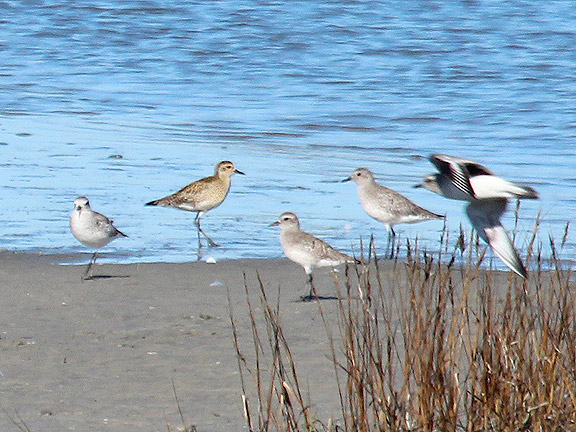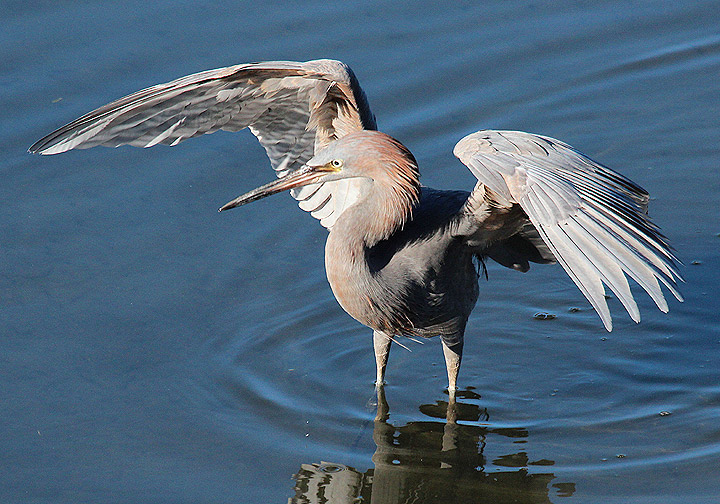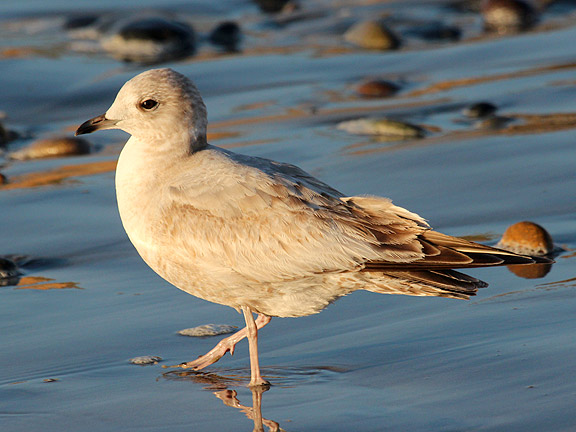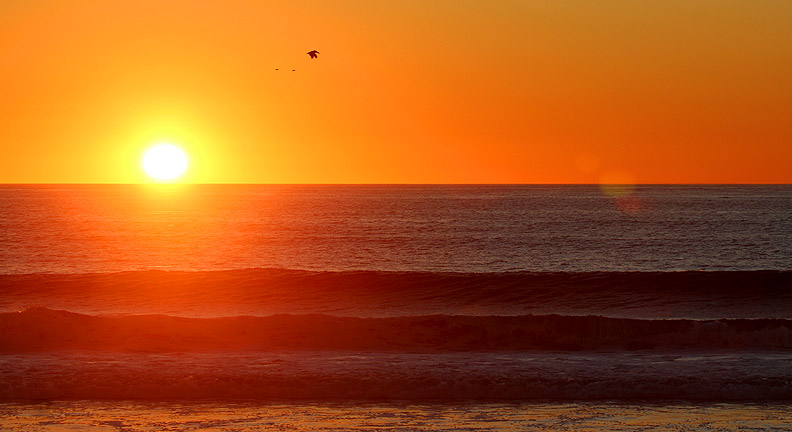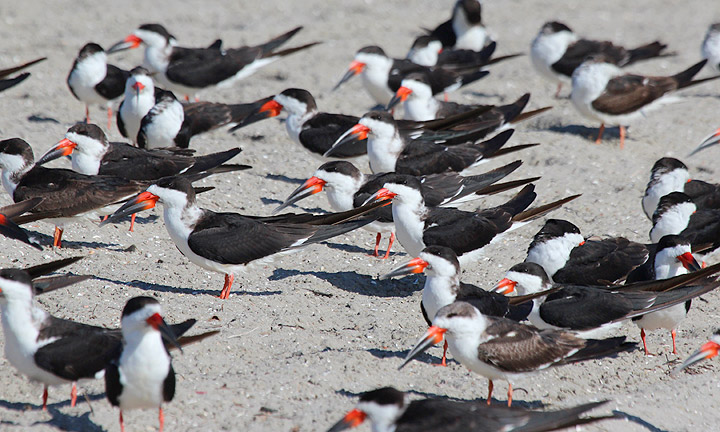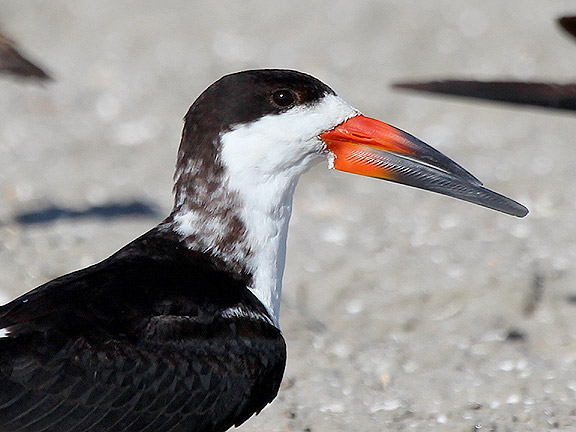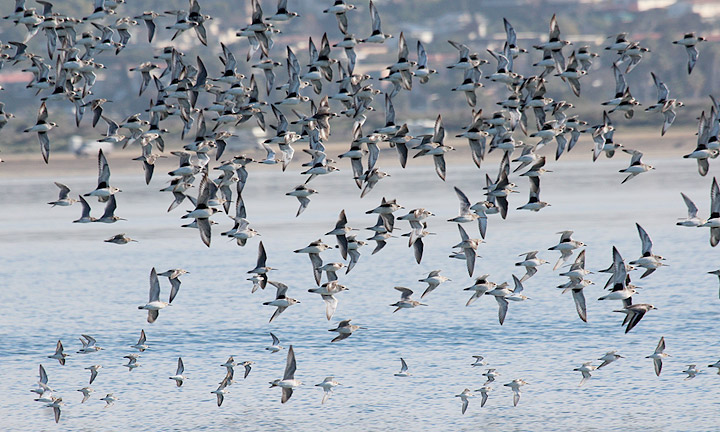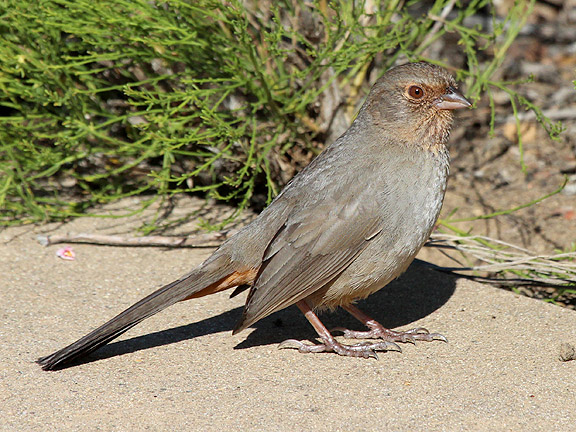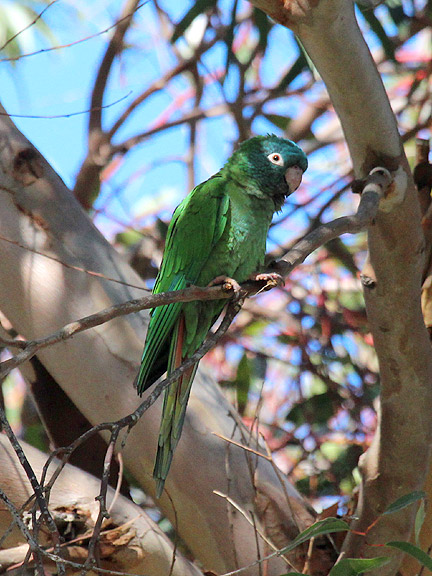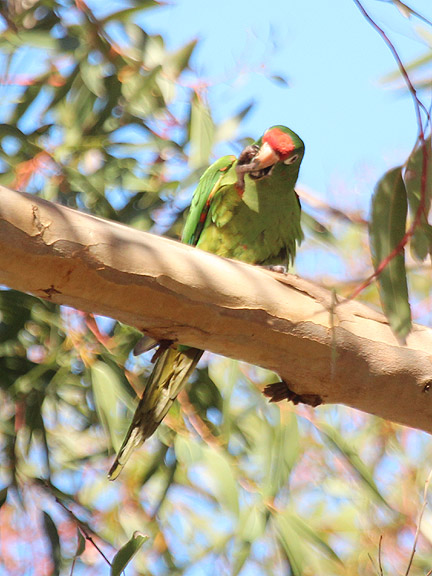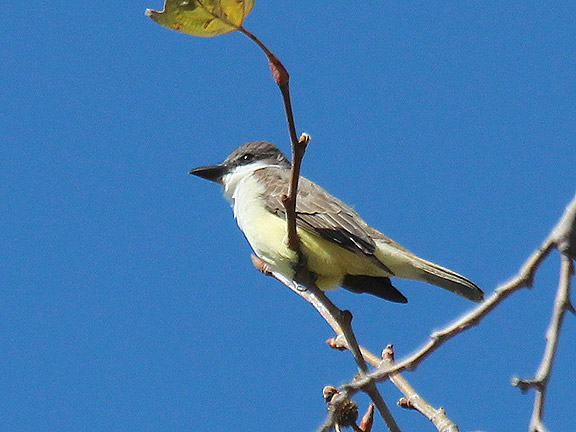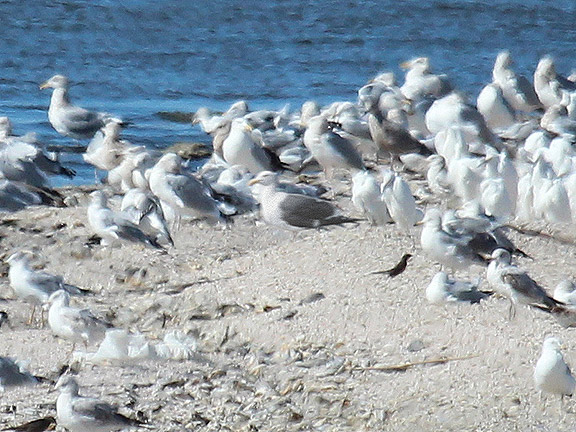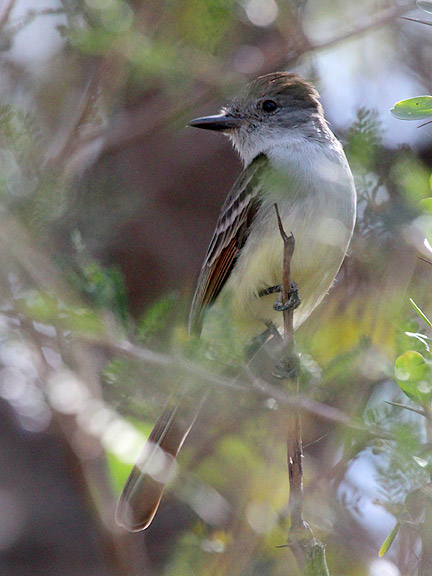This past November, my wife's work decided to send her to Carlsbad, California to be certified in diamond grading. She had to fly out for the last week in January and would be in classes all week during the day. So I decided to join her halfway through the week so I could get a couple days of birding in southern California in. I flew into Long Beach on Wednesday and drove down the coast to Carlsbad. Along the highway one of the first birds I spotted was a
WHITE-TAILED KITE hovering over an open field. I had a feeling that after seeing my long time nemesis in southern Utah earlier in the month that I would see multiple on this trip. It ended up being the first of 4 I saw during the 2 ½ days along the coast--as with most nemesis birds, it seems like after you finally get one you see them everywhere.
White-tailed Kite Composite
1 of 4 seen while in Cali
Once in Carlsbad I wasted no time going to the beach--there would be gulls after all and that would keep me happy for a couple hours. I quickly found a mixed flock of Western, California, Ring-billed, and my favorite white-headed gull species--the
HEERMANN'S GULL. I spent some time admiring these birds, while also scanning the surf, picking up
SURF SCOTER and
PACIFIC LOON, and a couple of Dolphins that cruised by.
My Favorite white-headed Gull
Heermann's Gull at Carlsbad State Beach
I drove up into Carlsbad and spotted a couple of hawks soaring that resembled Swainson's. When I got my binoculars on them I was greeted by two light adult birds--pretty good for the area in the winter. I ended the first day waiting for Sam at the GIA (Gemological Institute of America) enjoying the chorus of chipping
Yellow-rumped Warblers and whistling
Cedar Waxwings.
Yellow-rumped Warbler in Carlsbad
On Thursday after dropping Sam off I headed down the coast towards San Diego. I stopped at Cardiff State Beach and got great shots of a
ROYAL TERN on the beach. A nice mix of gulls here included 1
Glaucous-winged Gull.
Royal Tern at Cardiff State Beach
I planned on stopping several more times, but there weren't any great beaches for birding the further south I went. By the time I got to Torrey Pines the roads were a mess as a PGA tour event was happening. After 40 minutes to just get past I decided to go to Mission Beach and the San Diego River where I knew there would be birds. At Mission Beach there were a couple
SANDERLING and one
BLACK-BELLIED PLOVER. I saw my first
Large-billed Savannah Sparrow along the jetty here too.
Large-billed Savannah Sparrow at Mission Beach
After exhausting the birds on the Jetty I headed to the south side of the San Diego River at a place called Robb Field. It was birding bliss. There were 100's of shorebirds on the mudflats here, joined by hundreds of gulls and around a dozen wading birds. Scanning through the Black-bellied Plovers I found Dunlin, Red Knots, Dowitchers, Sandpipers, Turnstones, Yellowlegs, and more. The best find were 2 Golden-Plovers, which I would assume were
PACIFIC GOLDEN-PLOVER based off timing. There were also hundreds of Godwits and smaller numbers of Curlews and Whimbrel.
Pacific Golden-Plover with Black-bellied Plovers
San Diego River at Robb field
The waders included Great and Snowy Egrets, and several
LITTLE BLUE HERON. As I scanned the beach one of the "blue herons" caught my eye. It seemed lanky as it was walking and I wondered if it might be a
REDDISH EGRET. It was about 300 yards down river so I headed that direction. When I got there the bird clearly had a pink base to the bill, and when it started dancing I started taking pictures!
Reddish Egret in the San Diego River at Robb Field
Later I found out that this bird had been up and down the river the past month--so it wasn't a huge fine, but still cool non-the-less. I went back to the river 2 more times, and on both occasions the bird was in the same area. In the afternoon I headed back north to pick Sam up. We headed over to Carlsbad State Beach where the gull flock was joined by a
MEW GULL. After enjoying the beach and sunset we called it a night.
Mew Gull at Carlsbad State Beach
Sunset at Carlsbad State Beach
After the Reddish Egret I decided to hop on the San Diego listserv and see what else had been around that might be worth checking out on Friday. There were a couple birds I could fit into to the plans I already had--most notably a Thick-billed Kingbird in Chula Vista just a couple miles from the Mexico border and a Yellow-crowned Night-Herons at Tijuana Slough NWR where I was already heading to look for Clapper Rail in the afternoon. After dropping Sam off on Friday morning I hopped on the I-5 and headed straight to San Diego. My first stop was Mission Bay where someone had posted about a roosting flock of
50 BLACK SKIMMERS. I added my lifer skimmer last February just up the coast, but didn't get any pictures since the birds were 500 yards away. The area in Mission was called Crown Point, and after getting there and checking several beaches I hadn't found anything. As I was getting ready to leave I saw 4 skimmers flying out over the bay. They were headed out towards the ocean so I figured I must have missed the flock and these were stragglers. As I drove out I noticed a huge flock of shorebirds on the beach that I had missed driving in. I pulled over and as I put my binoculars up I was shocked to see dozens of skimmers intertwined with a huge flock of black-bellied Plovers.
Black Skimmers at Crown Point
I drove back to the parking area and grabbed my camera and headed down the beach. It was about a ¼ mile and the whole time I hoped the birds wouldn't flush. As luck would have it, they didn't--but instead allowed me to walk right up within about 30 to 40 feet and watch them.
Black Skimmer at Crown Point
I counted 130 skimmers in the flock which also had Dunlin, Knots, Sandpipers, and Dowitchers mixed in. I spent about an hour admiring the colorful and incredible bills on the skimmers before heading out. As I started to leave it was perfect timing as two joggers ran right through the flock sending them every which way. I was able to get some flight shots of the skimmers and the flock of shorebirds as they circled--eventually landing just 200 yards form the parking lot.
Plovers, Dunlin, Knots, Sandpipers, and Dowitchers
at Crown Point
I headed back to the north jetty of the river where I enjoyed a nice flock of
SURFBIRDS with a couple
BLACK TURNSTONE mixed in. A flyby
WANDERING TATTLER was the only of the trip. I swung by Robb Field again and the same mix of birds was present as the day before--but many fewer plovers, and no Pacifics. From Robb Field I drove south into Point Loma and out to Cabrillo National Monument. I just wanted to check out the lighthouse and go somewhere I hadn't been before. From my car I could hear Purple Finches, White-crowned and Golden-crowned Sparrows, Orange-crowned Warblers, and California Towhees singing. When I got out in the parking area a couple
CALIFORNIA TOWHEES came right in almost on top of my feet.
California Towhee at Cabrillo National Monument
After leaving the park I headed back into Point Loma and drove though the neighborhoods listening for parrots or parakeets. I figured I would hear one sooner or later, as this has worked for me elsewhere in California and Costa Rica. It only took about 10 minutes before I found a group of about
10 BLUE-HEADED PARAKEETS with a couple
MITRED PARAKEETS mixed in. Neither are really considered "wild", but just like the Nanday they seem to be doing fine one their own and were a treat to see.
Blue-headed and Mitred Parakeets at Point Loma
Trying to keep to schedule to get back and pick Sam up, I hopped on the interstate and headed towards Chula Vista to see if I could snag a lifer
THICK-BILLED KINGBIRD. It was only like a 15 minute drive and when I got there it took a couple minutes to pin point the area in the neighborhood that the directions pointed to. In the end it wasn't the directions, but the bird chattering from it's perch at the top of a Sycamore that gave it away. I quickly found a spot to park and walked to a place where I could get a good view with the sun in a good spot for photos. The bird couldn't have picked a higher point in the tree--and sat there for 15 minutes while I watched. What a honker on this beauty.
Lifer Thick-billed Kingbird in Chula Vista
From here I made my way to Imperial Beach and the Tijuana Slough National Wildlife Refuge. There had been a variety of really good birds reported here in the past month, but I was unable to find any of them--including the Night-Herons. Instead I hoofed it on the path out into the refuge as the tide was receding to look for
CLAPPER RAILS. I got great looks as
Belding's Savannah Sparrows, as well as
2 more White-tailed Kites. I hadn't seen a rail and was getting ready to leave when I spotted one scampering along the edge of a canal. I got a couple photos, before it disappeared back into the brush. I had spent a great deal of time here looking for Hepatic Tanager and the herons and had coincidentally run out of time. I had to head back to Carlsbad and pick up Sam. We ended the day driving east to Palm Springs for the weekend.
Clapper Rail at Tijuana Slough NWR
Saturday the birding was limited to a quick drive down to the north shore of the Salton Sea. We ended up at the Old Salton Sea Yacht Club so I could scan through the gulls with the hopes of maybe pulling a Yellow-footed Gull out of the masses. This species is regularly found on the lake in the summer but is rather rare in the winter. There were about 1,000 gulls in the area, but the scoping was difficult because of the wind and the heat distortion from the sand on the beaches. After a while I was going to give up when I caught a darker backed gull within the masses. Big yellow bill, big yellow legs, a dark mantle--
YELLOW-FOOTED GULL. The bird was near a lot of Ring-billed, California, and Herring Gulls for comparison, and really stood out well.
Yellow-footed Gull at the Old Salton Sea Yacht Club
I would love to come back to the Salton Sea at a couple different times of year as the birding just in this one spot was amazing. Sunday morning we checked out of our hotel and decided to check out the Living Desert Zoo in Palm Desert. I didn't expect to see a ton of wild birds here, but was pleasantly surprised with the wild birds mixed into the natural habitat alongside the caged creatures. The best find was a
ASH-THROATED FLYCATCHER that when I initially saw I thought was a Dusky-capped. I could barely see any rufous in the tail in the field but after looking at the pictures later I could see it was just the poor lighting. Despite being common in the southwest in the summer, it is about as rare as Dusky-capped in this area during the winter.
Out of season Ash-throated Flycatcher in Palm Desert
Oak Titmouse, White-winged Dove, Greater Roadrunner, Costa's Hummingbird, and Gambel's Quail were among the more prevalent Mourning Dove, White-crowned Sparrow, Yellow-rumped Warbler, Lesser Goldfinch, and Anna's Hummingbirds.. Early in the afternoon we hit the road back to Long Beach to fly back to Salt Lake. The weather all week was in the 70's and 80's and a nice change from the 20's and 30's back home all winter. It was hard to leave such beautiful weather, and wonderful birding. I tallied 126 species in that time. Given the right planning and some serious birding, 150-170 species should be easy this time of year over a weekend down there.
Good Birding
Tim
Labels: life birds, Travel, trip reports












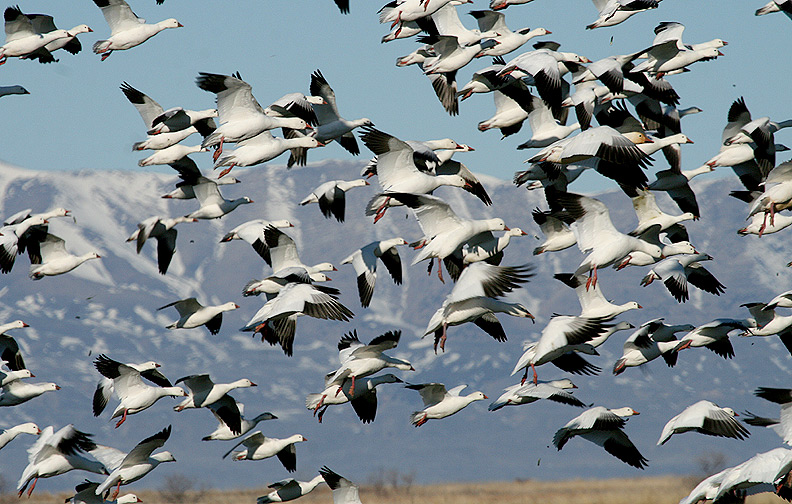
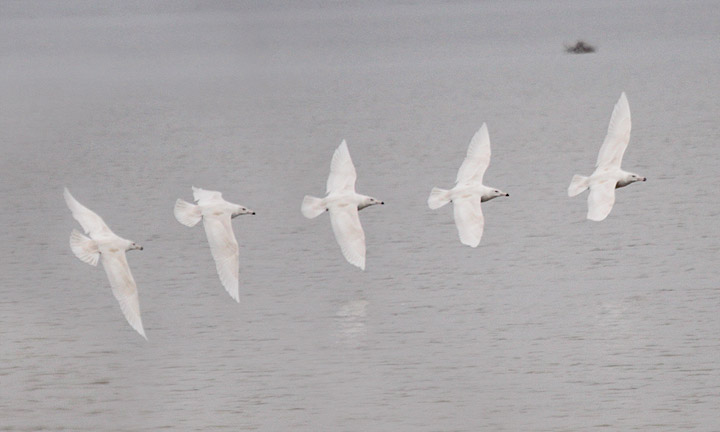
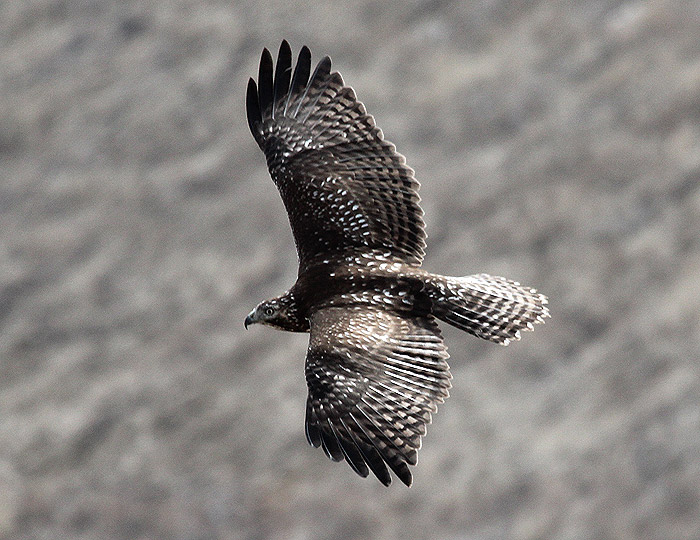




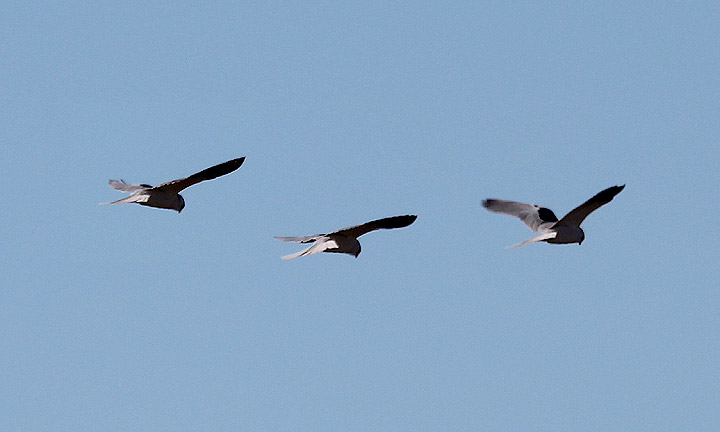
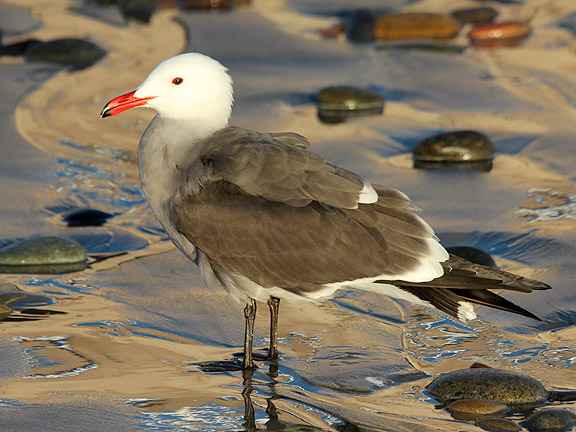
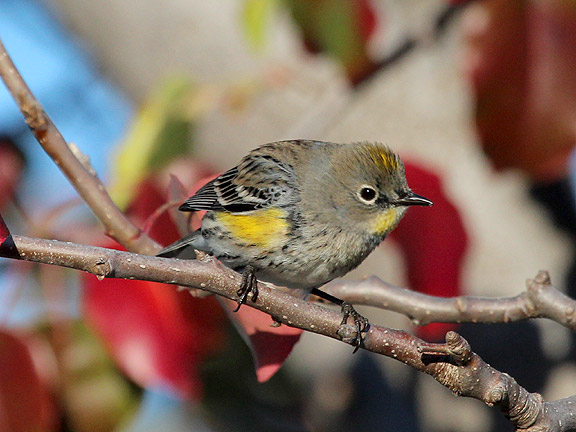
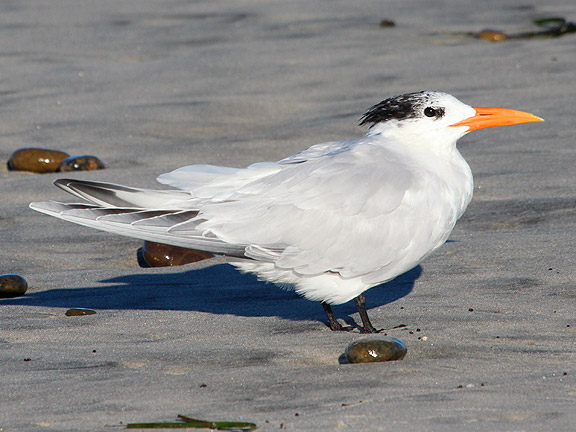
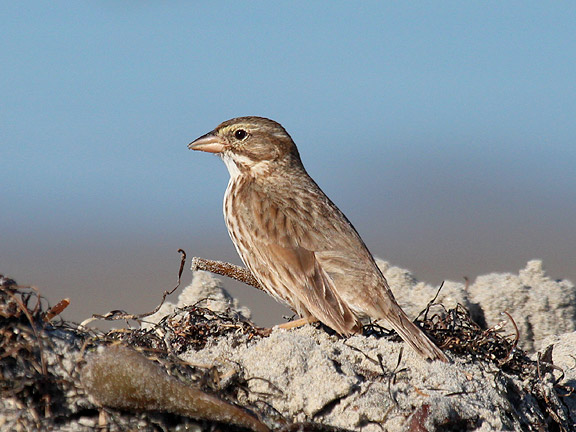 L
L